Travellers and traders: Muslims of Sri Lanka-By Uditha Devapriya
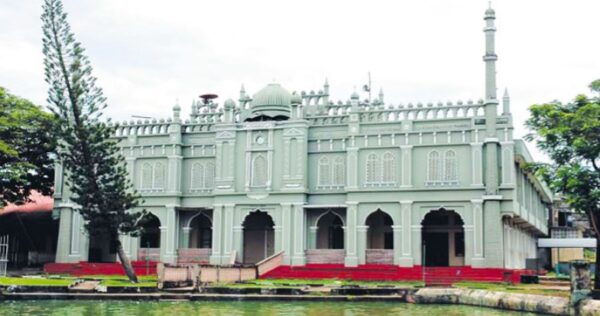
Source:Island
In 851 AD, an Arab merchant, called Soleyman, wrote an account of his travels to the island of Serendib. Impressionistic but insightful, it records the earliest known engagement of a Muslim with Sri Pada, also known as Samantukuta.
Soleyman does not refer to Sri Pada as “aadam malayi”, the name we see in later Muslim reconstructions of the peak. Instead he calls it “Al-Rohoun”, which is what the ninth century Indian poet Rajasekhara used in the Balaramanaya. “Rohoun” was a corruption of Ruhuna, to which the area around the mountain belonged. Literary sources inform us that this was the term used, and preferred, by Arabs and Indians from that time.
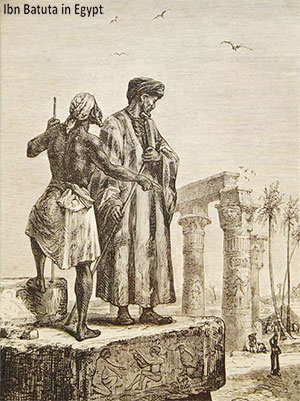 Around five centuries later, the scholar and traveller Ibn Batuta is reported to have climbed the peak. Patronised by the king of Jaffna, Batuta ascended the summit and came across a grotto bearing the name “Iskander.” Poets, travellers, and even historians would later posit this as evidence for the view, now largely debunked, that Alexander the Great climbed Sri Pada on his horse. Writing of his ascent, Batuta also noted that a Muslim Imam called Abu Abdallah, said to have died in 953 AD, was the first Muslim to make the climb. What we can speculate about from Batuta’s travels, other than the identity of “Iskander”, is that Muslim engagement with the summit dates to the 9th centuries.
Around five centuries later, the scholar and traveller Ibn Batuta is reported to have climbed the peak. Patronised by the king of Jaffna, Batuta ascended the summit and came across a grotto bearing the name “Iskander.” Poets, travellers, and even historians would later posit this as evidence for the view, now largely debunked, that Alexander the Great climbed Sri Pada on his horse. Writing of his ascent, Batuta also noted that a Muslim Imam called Abu Abdallah, said to have died in 953 AD, was the first Muslim to make the climb. What we can speculate about from Batuta’s travels, other than the identity of “Iskander”, is that Muslim engagement with the summit dates to the 9th centuries.
Muslim engagement with Sri Lanka, of course, precedes these pilgrimages, while Arab engagement with the island predates even the coming of Islam. From the Mahavamsa we know that Pandukabhaya, after emerging triumphant from his war with his uncles, settled a community of “yonas” at the Western gate of his capital, Anuradhapura. “Yona”, we know well enough, was the term the Portuguese and the Dutch later used on Arabs.
We can’t really confirm whether the community Mahanama Thera referred to were the ancestors of the traders and settlers European colonisers encountered many centuries later. Yet, the coincidence is striking: it suggests that European colonisers considered the Arabs as alien to the country as the yonas of yore. Of course, the truth was more complex than such colonialist perceptions would suggest: by the 15th century, Arabs had become active participants in Sri Lanka’s economic, cultural, and political life.
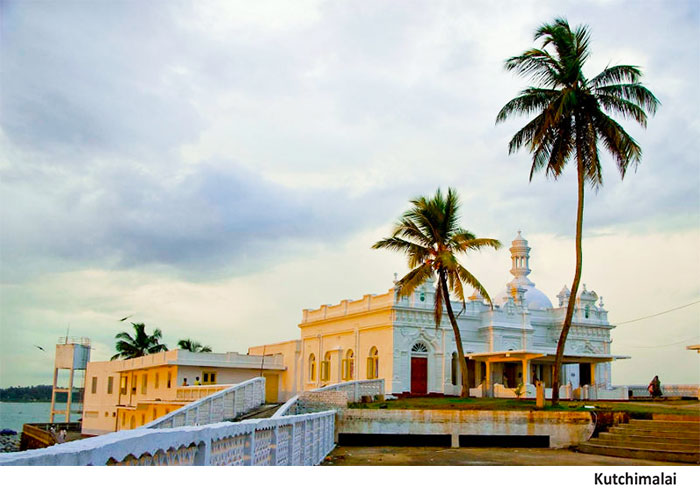 We come across extensive references to Arabs in the country no earlier than in the sixth century AD. The literary sources we have tell us that merchants, from this period, made their way to Sri Lanka through three trade routes: the Indian to the North, the Chinese to the East, and the Arab to the West. Braudel writes that by the seventh century, trade in the Far East was dominated by these three economies. Sri Lanka’s receptivity to all three had a great deal to do with its emergence as a distinct geographic entity, separated but not cut off from the Indian subcontinent. It is from this vantage point that we should delve into the Arab origins of the Muslims, specifically Moors, of Sri Lanka.
We come across extensive references to Arabs in the country no earlier than in the sixth century AD. The literary sources we have tell us that merchants, from this period, made their way to Sri Lanka through three trade routes: the Indian to the North, the Chinese to the East, and the Arab to the West. Braudel writes that by the seventh century, trade in the Far East was dominated by these three economies. Sri Lanka’s receptivity to all three had a great deal to do with its emergence as a distinct geographic entity, separated but not cut off from the Indian subcontinent. It is from this vantage point that we should delve into the Arab origins of the Muslims, specifically Moors, of Sri Lanka.
Where did Arab traders settle in Sri Lanka? One school of thought argues that they first settled in localities in the north. Another school contends that they moved southwest, with records showing that a landing was made in Barberyn in 1024 AD. It must be noted that two of the oldest mosques were built in the latter region: the construction of the oldest of them, Al Abrar, dates to the 10th century, and that of the other, Kechchimalai, to the 12th.
Regardless of where they settled, we know what role they played in Sri Lankan society: they were, first and foremost, traders and merchants. In this, they became intermediaries between the island and the world. Enmeshing themselves in the commercial fabric of the country, they introduced practices that may not have been familiar to locals before their arrival. To say this is certainly not to deny the vitality of Sinhala civilisation; merely to note that the assimilation of other groups to that civilisation reinforced that vitality.
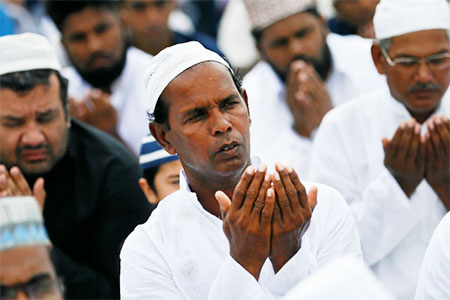 These encounters were hardly limited to the southwest, or even the north. Wherever they settled, Muslim traders wielded much influence, serving not just as merchants but also patrons of society. Encountering Colombo, for instance, Ibn Batuta wrote of a vizier called Jalasti, who had with him a retinue of 500 Abyssinians. Tennent suggested that his presence showed the Sinhalese were indifferent to commerce. Tennent’s view is, in one sense, a generalisation in line with colonialist readings of Sinhala culture, but it belies the reality of Muslim involvement of the island’s trade after the 10th century.
These encounters were hardly limited to the southwest, or even the north. Wherever they settled, Muslim traders wielded much influence, serving not just as merchants but also patrons of society. Encountering Colombo, for instance, Ibn Batuta wrote of a vizier called Jalasti, who had with him a retinue of 500 Abyssinians. Tennent suggested that his presence showed the Sinhalese were indifferent to commerce. Tennent’s view is, in one sense, a generalisation in line with colonialist readings of Sinhala culture, but it belies the reality of Muslim involvement of the island’s trade after the 10th century.
Their sense of privilege and proportion was significantly enlarged by a concession they won from Sinhala rulers: the ability to be tried by their own laws. This was an expedient necessitated by commerce: according to Lorna Dewaraja, whenever a dispute arose in any of the ports where they traded, it had to be settled “by a tribunal consisting of Muslim priests, merchants, and mariners.” Such privileges were crucial, because like any trade-based community Arab Muslims required a body of laws they could apply to their kind, wherever and in whatever part of the world they operated from. Their importance in this regard was not lost on local rulers: part of the reason why Arya Cakravari patronised Ibn Batuta so well was his desire to tap into Arab trade in the region.
Unlike European colonisers, even Muslims from other parts of the region, Arab traders formed one of the more peaceful communities in the island. Their pacifist nature, a stark contrast to the fanaticism of their compatriots in India, the Maldives, and South-East Asia, encouraged Sinhala kings to grant them settlements of their own. Eventually they became not just a part, but a fact, of life in the country.
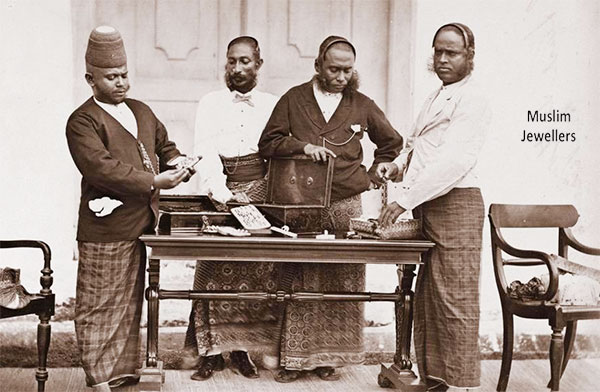 In his account of Portuguese rule in Sri Lanka, Paul E. Pieris recounts an incident where, upon their first arrival in the island, the colonialists managed to anger locals by attempts to slaughter their cattle. What is fascinating about this episode is that Muslim settlements in Sri Lanka preceded the Portuguese by nine centuries, and even more fascinating, the fact that cattle slaughter was one of the few crimes for which a refugee could not escape the brunt of the law if he or she escaped to a viharagam (where cattle were held in high regard). It was, to borrow the parlance of modern law, a non-bailable offence.
In his account of Portuguese rule in Sri Lanka, Paul E. Pieris recounts an incident where, upon their first arrival in the island, the colonialists managed to anger locals by attempts to slaughter their cattle. What is fascinating about this episode is that Muslim settlements in Sri Lanka preceded the Portuguese by nine centuries, and even more fascinating, the fact that cattle slaughter was one of the few crimes for which a refugee could not escape the brunt of the law if he or she escaped to a viharagam (where cattle were held in high regard). It was, to borrow the parlance of modern law, a non-bailable offence.
Based on such fragmentary evidence, the conclusion we can reach is that cattle slaughter would have been tolerated as a practice of a community, in this case Muslims, assimilated to the country’s society. When committed by a foreign group, on the other hand, it would have constituted an act of disrespect, or even aggression.
There is, of course, no doubt that Muslim settlers and local communities faced a common enemy in the European coloniser. In their attempts to convince the king of the perfidious nature of the Portuguese, for example, Buddhist monks actively took the side of Muslim traders, warning the Sinhalese court of the dangers of allowing the Westerners too many privileges. By this point the reputation of Muslims had transcended their position as mere traders; they had entered other fields, as diverse as medicine and the crafts, flourishing in whatever domain they settled in. In incorporating them into the court, as physicians or members of the military, the Sinhala polity thus absorbed them into its social structure. It is this that explains the high regard Buddhist monks had for them. Historians who tend to play with categories of race, without noting the role caste played in Sinhala society, fail to appreciate fully the implications of such developments.
We see these processes continue in the Kandyan kingdom. For a social structure that was so rigid and fixed, it is astonishing that it absorbed outside communities so well. Muslims not surprisingly figured in its scheme of things: they were decreed a place in the Sinhala caste system, banded together with the karavas or the fisher folk. They were also allowed their own headmen for the villages they settled in. This gave them a twin advantage: while maintaining amicable relations with the king, they continued with their cultural practices that set them apart from other social and caste groups. Readily genuflecting before rulers and nobles, they played a role as merchants, physicians, and envoys.
The fact that we do not come across records of tensions between them and other groups, particularly those such as the Buddhist clergy, indicates that, for all its limitations, Kandyan feudalism did a better job than British colonialism in maintaining inter-group relations. To say this is by no means to romanticise the caste system; only to suggest, as historians like Lorna Dewaraja have, that colonialism brought an end to a period of symbiotic harmony between groups who were, with the advent of Western rule, to see themselves in ethnic rather than caste terms. This, however, is an entirely new domain of research, one which most contemporary scholars, barring the likes of Asiff Hussein, have not explored. That it should be explored is implied in the unfortunate, though hardly inevitable, conflagrations of ethnic tension which crop up from time to time today. As Regi Siriwardena suggested a long time ago, what needs to be emphasised is not imagined unity, but actual diversity: a diversity that remained a force for unity for so long.








